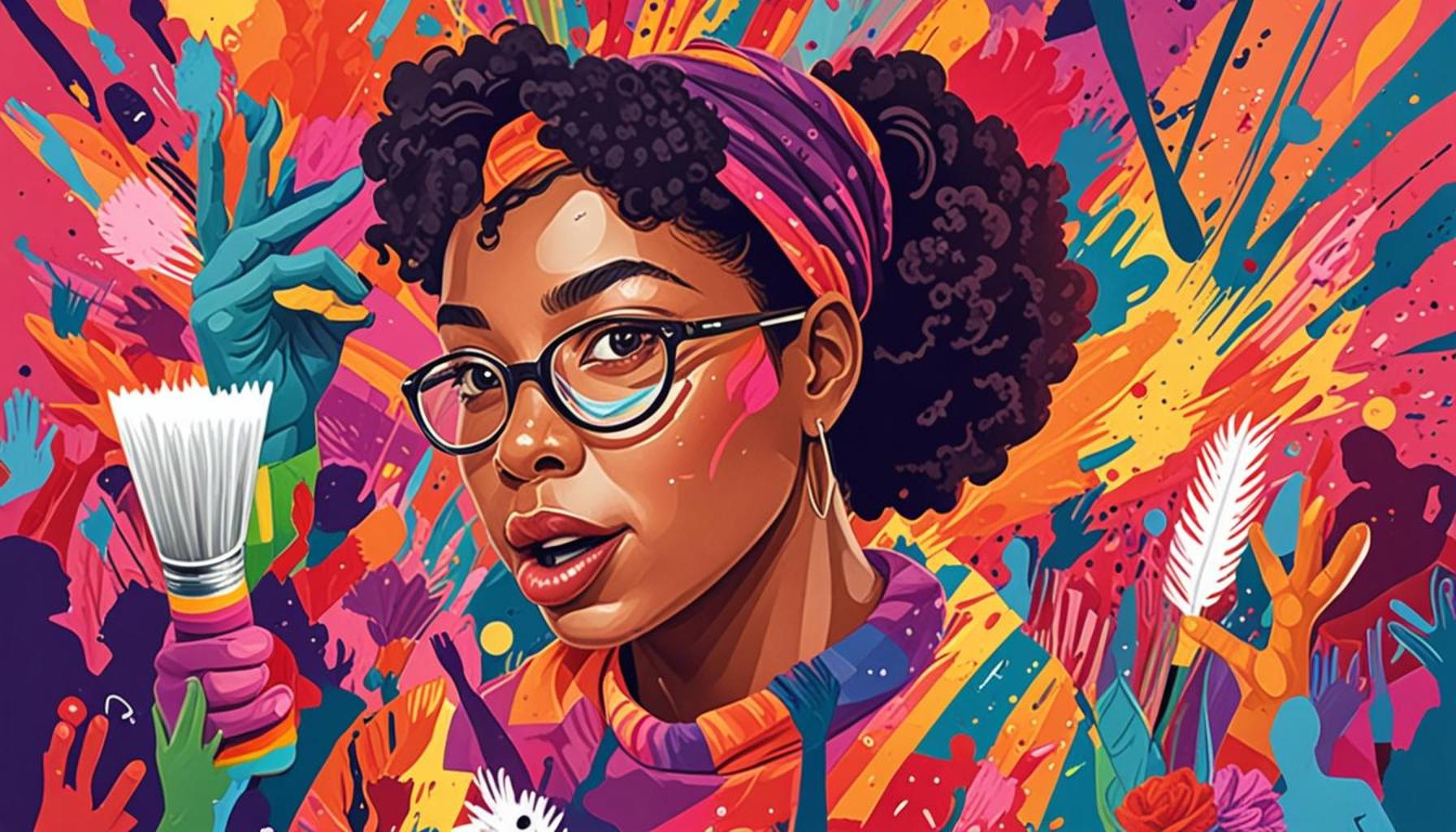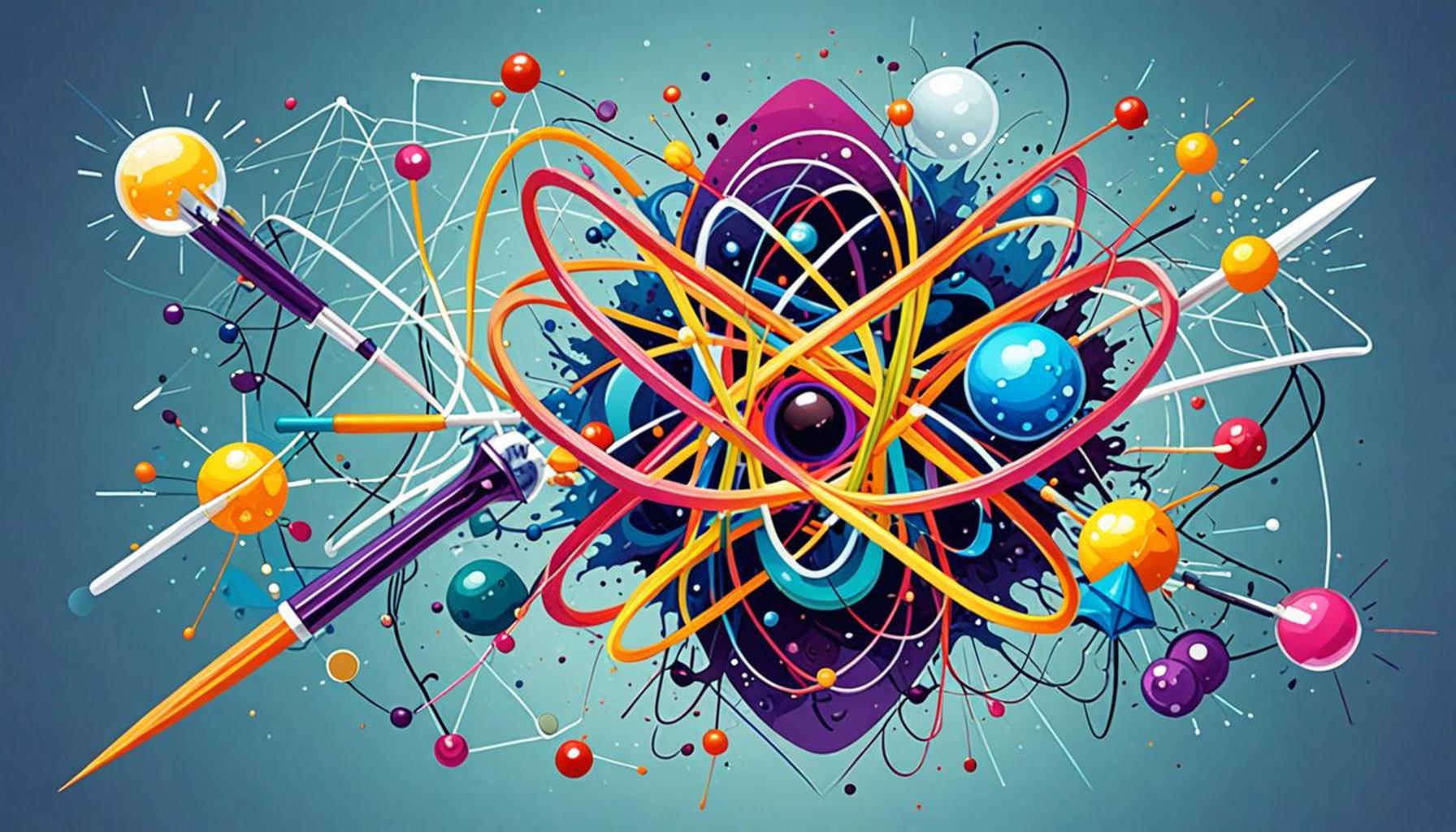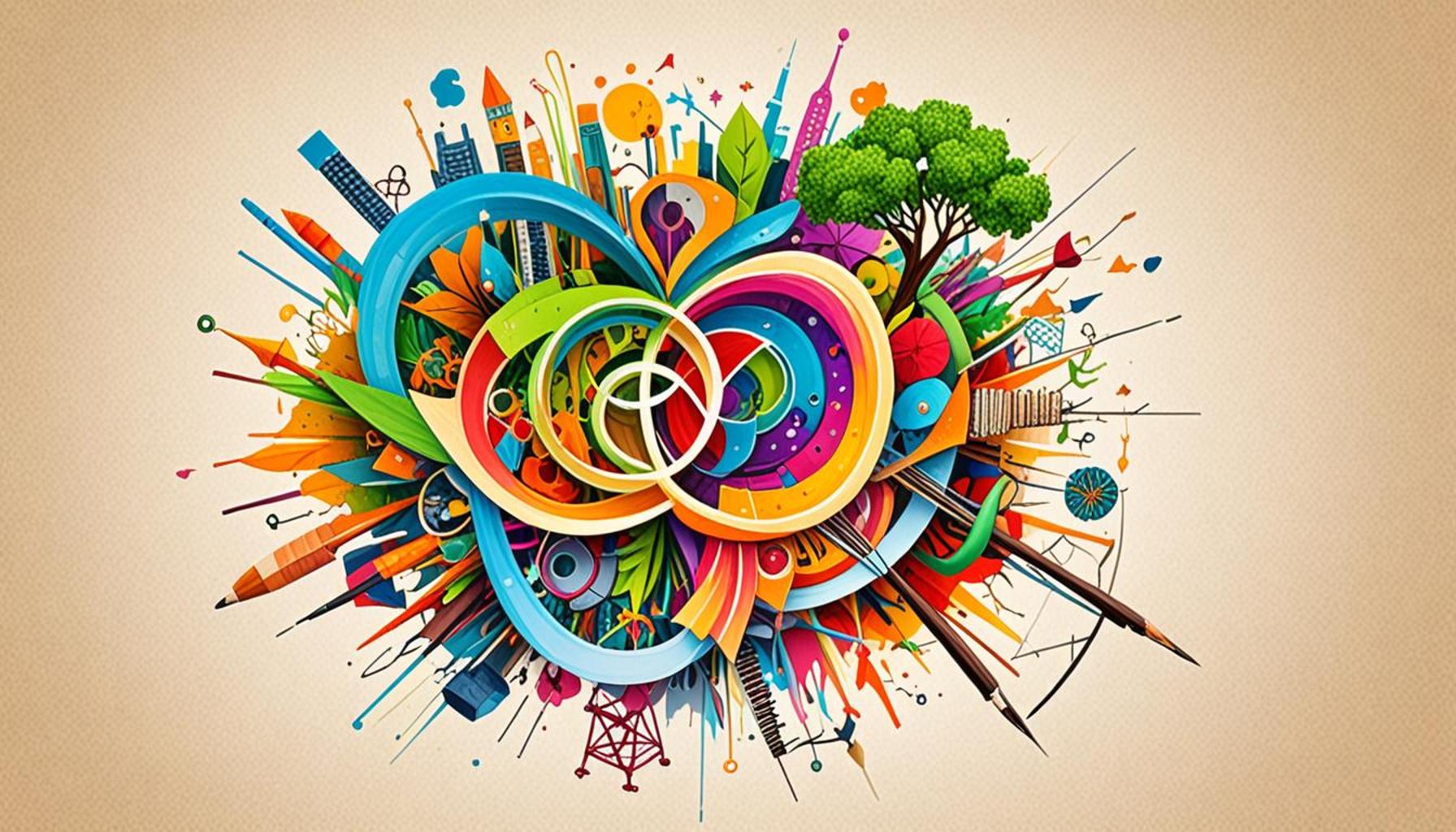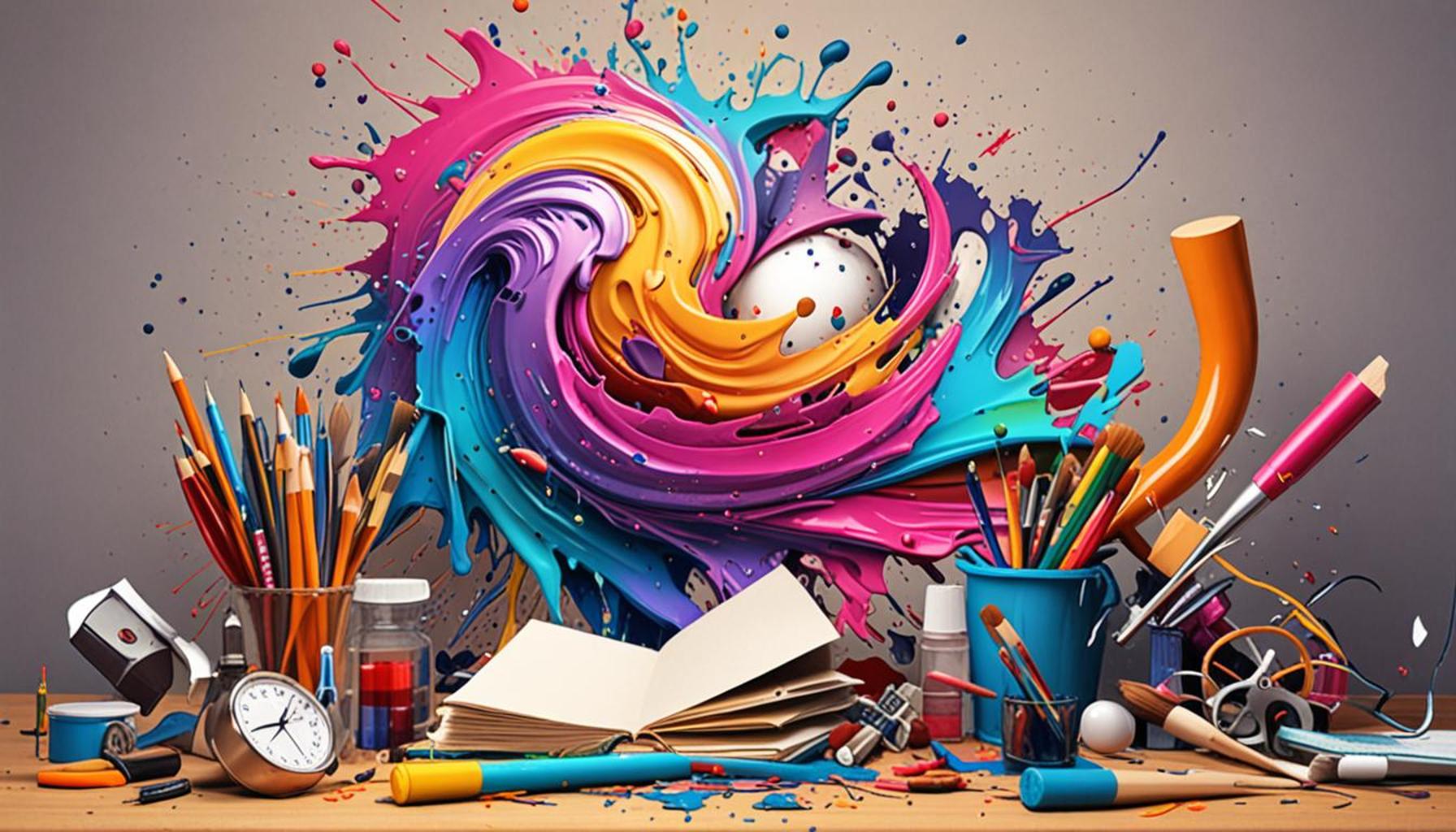Art as a Form of Activism: Projects Involving Communities and Social Causes

Art as a Catalyst for Social Change
Art, in its myriad forms, has evolved far beyond mere aesthetics, serving as a formidable force in addressing pressing social issues and sparking essential conversations. The shift towards using creative expression as activism is becoming increasingly prevalent, evident in urban landscapes adorned with murals and the evocative performances staged in community theaters. These artistic endeavors are strategically utilized to challenge societal norms, introduce new perspectives, and inspire collective action.
Artistic initiatives frequently act as a voice for marginalized communities, bringing to light critical issues such as:
- Racial Equality
- Environmental Justice
- Gender Rights
- Homelessness Awareness
This intersection of art and activism encourages collaboration and fosters community engagement, uniting artists with individuals who have lived experiences directly tied to these issues. As these collaborations unfold, the power of storytelling through art becomes evident, conveying messages that resonate on personal and collective levels.
In the United States, a plethora of initiatives showcases how art can drive social change. For example, the Art for Equal Rights initiative engages artists to create public works that advocate for LGBTQ+ rights, transforming public spaces into platforms for inclusivity and acceptance. This grassroots movement not only amplifies the voices of those within the community but also invites the surrounding population to partake in thoughtful dialogues surrounding equality.
Similarly, community-driven murals in cities like Detroit and Philadelphia serve as vivid reminders of resilience and survival. These murals often depict local history, cultural narratives, and pressing social themes, effectively transforming neglected spaces into vibrant canvases that provoke thought and inspire action. In these neighborhoods, murals offer more than decoration; they promote healing and unification among residents, with many artists collaborating with local communities to ensure their stories are authentically represented.
The transformative power of art as activism goes beyond reflection. It actively shapes movements and community structures, encouraging broader civic engagement. As we delve deeper into various examples, we will uncover how art intertwines with activism, catalyzing change in ways that statistics and legislation alone cannot replicate. Join us in exploring the dynamic landscape where creativity meets social justice, and discover pioneering projects at the forefront of this movement.
DIVE DEEPER: Click here to explore more
Community-Centric Artistic Initiatives
Across the United States, art has taken on a new role as a compass guiding communities toward social justice and activism. Through various projects, artists and local populations join forces to create poignant expressions that not only reflect societal challenges but also stir action and inspire hope. These collaborations often result in transformative projects that highlight the power of community engagement and artistic innovation.
One noteworthy initiative is the Art on the Streets program in San Francisco, which utilizes street art to confront issues of homelessness and urban inequality. Local artists, often working alongside advocacy groups, create murals that portray the stories of individuals experiencing homelessness. These visual narratives serve as a powerful medium to humanize a marginalized population, challenging the prevalent stigmas that discourage understanding and empathy. By encouraging community members to participate in the mural-making process, the initiative fosters dialogue and solidarity around the issue of homelessness.
In the realm of environmental justice, the EcoArts Project provides another compelling example. Based in Brooklyn, this initiative partners with grassroots organizations to raise awareness about climate change and its disproportionate effects on low-income communities. Artists engage local residents in participatory workshops that culminate in public art installations urging action against environmental neglect. These installations not only beautify neighborhoods but also function as political statements that advocate for sustainable practices and policies.
Art and Dialogue: Fostering Connection
At the heart of these art-activism efforts is the fundamental objective of fostering connection among individuals. The Art and Social Change program based in Chicago exemplifies this principle. It facilitates workshops that encourage participants to explore their identity and share personal narratives through various artistic media, including painting, theater, and storytelling. By focusing on self-expression, the program enables participants from different backgrounds to build bridges of understanding while addressing social issues such as racial inequity and community violence.
Furthermore, the integration of art in activism not only challenges the status quo but also has the capacity to influence policy. Creative campaigns and art installations have proven to be effective tools in mobilizing public support for various social causes. For instance, the Women’s March in Washington, D.C., prominently featured art as a form of protest, with signs and banners emblazoned with compelling messages of empowerment. This visual language galvanized thousands, demonstrating that art can serve as a rallying cry for collective action, ultimately echoing the calls for policy reform and social change.
As we delve deeper into specific case studies and artistic movements, it becomes evident that the intersection of art and activism serves not only as a medium for expression but also as a critical catalyst for change. Through unity and creativity, these projects exemplify how art can amplify voices, inspire action, and contribute to broader societal movements.
| Category | Details |
|---|---|
| Community Engagement | Art projects foster community participation and bring together diverse groups to communicate for a common cause. |
| Awareness Raising | Art serves as a powerful medium to highlight critical social issues, facilitating discussions that can lead to meaningful change. |
Art has emerged as a compelling tool for activism, enabling creators to engage audiences on issues that matter. Projects that weave together community narratives not only showcase artistic talent but also promote cultural dialogues that resonate with their collective experiences. An example of this is mural initiatives that transform public spaces into platforms for storytelling, allowing local voices to express their hopes and struggles. Not surprisingly, these initiatives often spark a sense of pride amongst participants and invigorate local identity, fostering resilience in the face of social challenges.Moreover, through these projects, artists and communities collaboratively find innovative solutions to pressing issues such as inequality, climate change, and social justice. As discussions unfold, they can mobilize support and resources, turning art into a catalyst for action. Ultimately, art as activism bridges gaps between individual experiences and broader societal challenges, inviting audiences to reflect and act. Thus, it is clear that art transcends its aesthetic value; it holds the potential to inspire transformative activism.
DIVE DEEPER: Click here to discover more
The Role of Public Art in Social Movements
Public art has emerged as a significant player in social movements, with various projects across the United States illustrating its capacity to engage communities and promote social change. One compelling example is the Philadelphia Mural Arts Program, which stands as one of the largest public art initiatives in the country. Founded in the 1980s, this program collaborates with neighborhoods to create large-scale murals that not only beautify urban landscapes but also address pressing social issues such as violence, poverty, and racial inequality. By involving local residents in the mural-making process, the program cultivates a sense of ownership and pride, transforming blank walls into canvases of hope and resilience.
In New York City, the Bowery Mural project has become synonymous with progressive activism. This ongoing initiative invites artists to reinterpret the landscape of Lower Manhattan while addressing social and political themes. The murals often serve as platforms for urgent messages related to climate change, immigration rights, and systemic inequality. For instance, a recent mural by acclaimed artist JR sparked conversations about the rights of immigrants and the complexities of the American identity. Public installations like these resonate deeply, as they invite community dialogue and reflection, effectively turning the streets into spaces of activism.
Creative Responses to Anti-Racism and Inclusion
Art also plays an instrumental role in the fight against racism and for inclusivity. The 7th Annual Black and Brown Lives Matter Art Show in Los Angeles has provided a platform for artists of color to share their stories and perspectives surrounding social justice. This exhibition features a diverse array of artistic expressions, from visual art to performance, highlighting the lived experiences of marginalized individuals. By amplifying these voices, the exhibit not only educates attendees but also fosters a community of solidarity and empowerment.
Moreover, the Our Streets: Our Voices project in Seattle exemplifies how art can catalyze conversations about inclusion. This initiative gathers artists and community groups to co-create art installations that reflect the diversity of the city’s population. Through workshops and collaborative sessions, participants not only express their own narratives but also address issues of representation and belonging. The resulting artworks serve as both a celebration of cultural diversity and a critique of the systemic barriers that many communities face.
In Chicago, the Paint the City project seeks to harness the power of youth voices in discussions about urban development and social justice. Local young artists collaborate with community organizations to create murals that depict their aspirations for their neighborhoods. This initiative empowers young people by showcasing their identity and vision for the future, ultimately fostering a sense of agency and involvement in community decision-making processes.
As these examples illustrate, the integration of public art in activism reinforces the message that creativity and community engagement are powerful vehicles for social change. Whether it’s through murals, installations, or performances, these artistic endeavors stimulate awareness and action around critical social causes, affirming the vital role that art plays in advancing collective narratives and inspiring future generations.
DISCOVER MORE: Click here to delve deeper
Conclusion: The Transformative Power of Art in Activism
As explored throughout this article, art as a form of activism has become an indispensable tool for fostering community engagement and addressing pressing social issues. Initiatives like the Philadelphia Mural Arts Program, the Bowery Mural project, and exhibitions such as the 7th Annual Black and Brown Lives Matter Art Show not only beautify urban spaces but also serve as profound commentaries on the societal challenges of our time. These projects empower marginalized voices, encouraging dialogue and reflection within communities.
The ability of public art to transform spaces and perceptions cannot be understated. By highlighting themes of inclusivity, anti-racism, and youth empowerment, artists and communities are collaboratively reshaping public discourse. Art installations become platforms where stories intertwine, creating a rich tapestry that reflects diverse experiences and encourages solidarity. For those looking to understand the formidable impact of creativity on social movements, engaging with these artistic endeavors offers valuable insights into the human condition and the ongoing struggle for justice and equality.
In light of these developments, it is imperative for communities and advocates alike to recognize the potential of art as an agent of change. Future projects should strive to harness this power, expand participation, and continue to bridge cultural divides. Ultimately, by prioritizing collaboration and inclusive narratives, art can illuminate paths toward a more just and equitable society, inspiring generations to envision a future where their voices are not only heard but celebrated.


